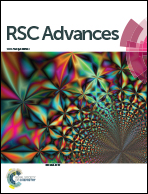Net CO2 emissions from global photovoltaic development
Abstract
We examine cumulative net energy use and cumulative net CO2 emissions associated with the development of photovoltaics (PVs) on a global scale. The analysis is focused on the performance of five countries with the largest installed PV capacities—Italy, Japan, Germany, Spain, and the United States—and on the aggregate values for the world (23 countries). The historical record shows that, during the past 19 years of development, the installed base has grown to 64 GW, with an average annual growth rate of almost 40%. During that period the manufacturing and use of photovoltaics has led to a cumulative net consumption of approximately 286 PJ of energy, and cumulative net emissions of 34 Mt of CO2 as a result of a considerable payback time. While energy/CO2 payback time is not unique to PV systems, it plays a larger role in the development of new energy systems than other low-carbon systems. PV energy/CO2 payback time decreases with the following measures: installation of PVs in locations with a large PV potential and high CO2 emissions of the electricity replaced, manufacturing PVs at locations with low CO2 emissions/kW h of electricity used in the production, recycling PVs, and increasing PV conversion efficiency. The analysis is therefore extended into the future for three scenarios with different maximum capacities of photovoltaics (20%, 50%, and 100% of total electricity production). In these scenarios, cumulative net CO2 emissions can be reduced by 4%, 9%, and 18%, respectively, over the long term (by the year 2050). Short-term CO2 increases during growth versus long-term CO2 reduction present a trade-off in developmental growth strategies.


 Please wait while we load your content...
Please wait while we load your content...